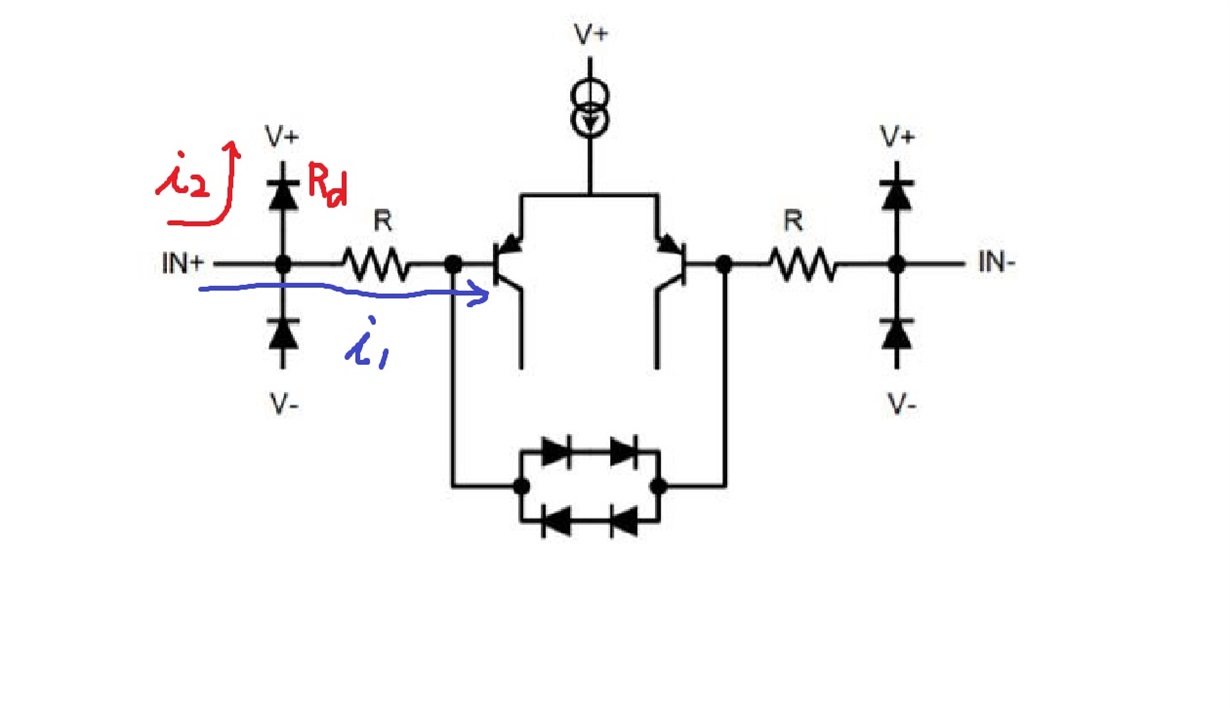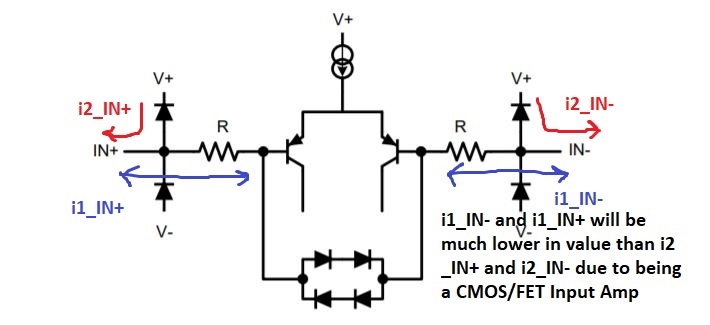Other Parts Discussed in Thread: THS4531
Hello Support team,
I want to know more detail regarding below post.
Could you let me know about more detail structure what ESD diodes used to protect the input from differential over voltage are not symmetrical. If you can show the block diagram, it is very helpful for my understanding it.
What does "net current" mean?
Best Regards,
Hirokazu Takahashi




